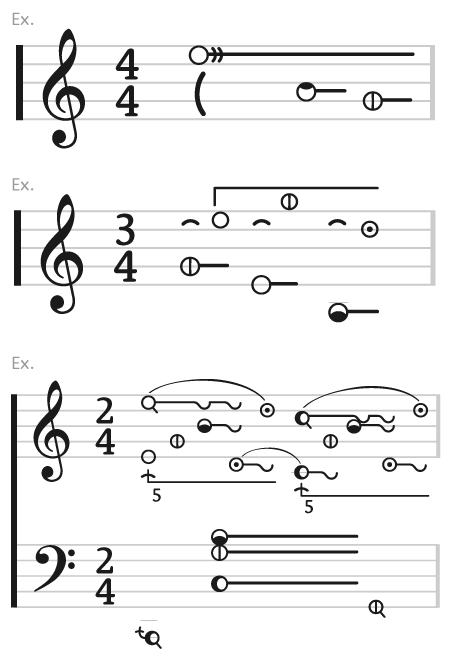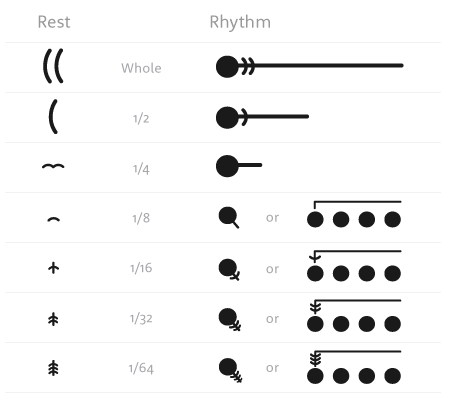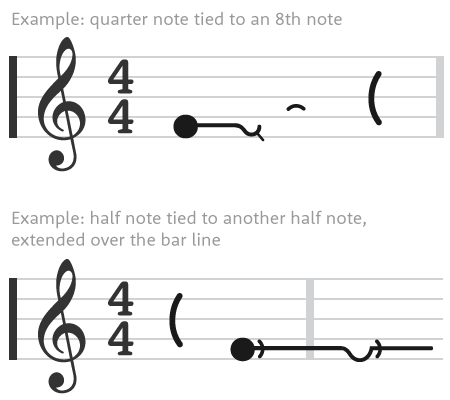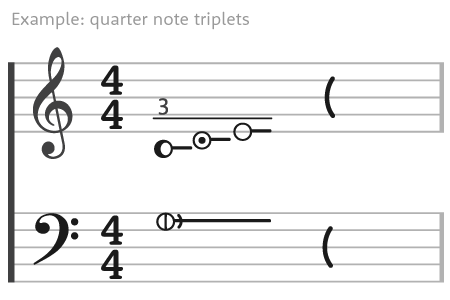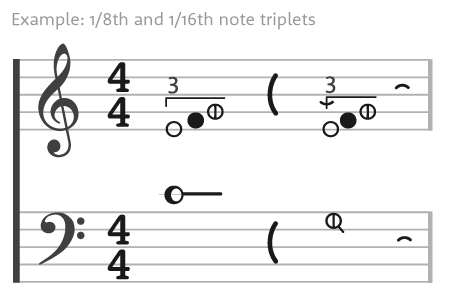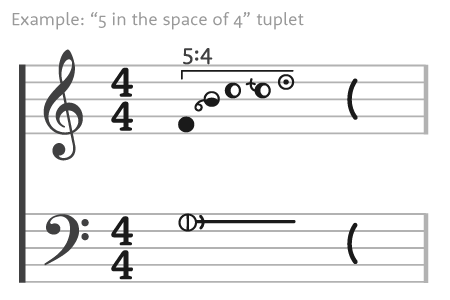Pitch
Pitch positions haven't changed — notes are on staff lines in the same position as in traditional notation. Each pitch also has a unique symbol with its own mnemonic “helper” word that describes it. Pitch symbols are the same for all clefs and octaves.
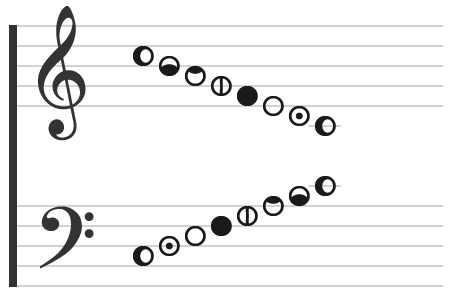
Mnemonics
 A: Above
A: Above B: Below
B: Below C: Looks like `C`
C: Looks like `C` D: Dot
D: Dot E: Empty
E: Empty F: Full
F: Full  G: Groove
G: GrooveAccidentals
Sharps point up and end with a + sign; flats point down and end with a 0 sign. To avoid confusion, accidentals connect directly to the note and are visible every time they occur. When it helps, naturals can be used too, and they look like = signs.
Key Signatures
Key signatures still work with Hummingbird, but we put them in plain english at the beginning of the song. We call it a "key marking" and treat it just like a tempo marking. Traditional key signatures (with the accidentals on their respective lines) also work, but we only use them when there are four or more accidentals; otherwise, they add unnecessary difficulty when it's just as easy to show accidentals for each note.
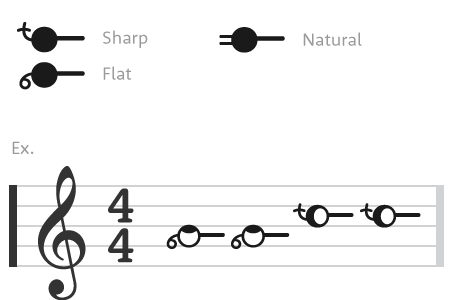
Multiple Voices
Multiple voices are represented in Hummingbird by using the appropriate rhythm durations for each note. Hummingbird easily accommodates overlapping notes, as seen in these examples.
